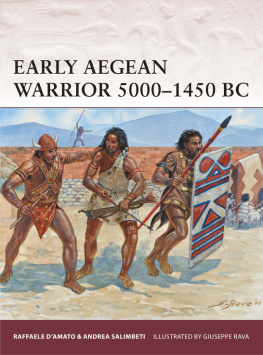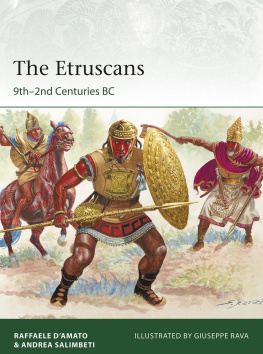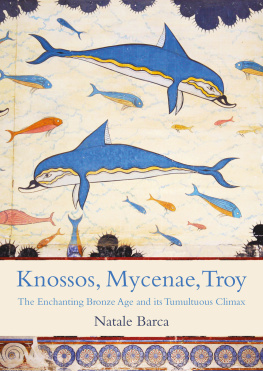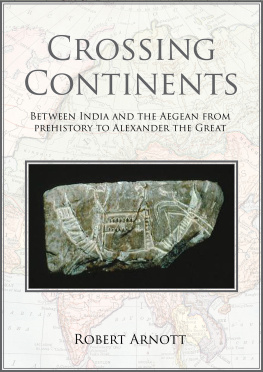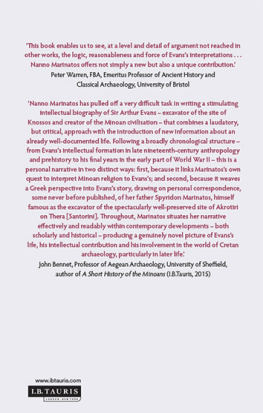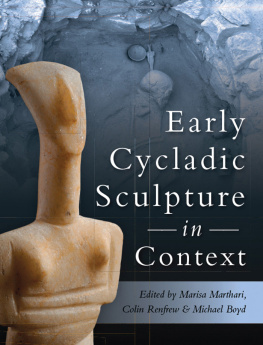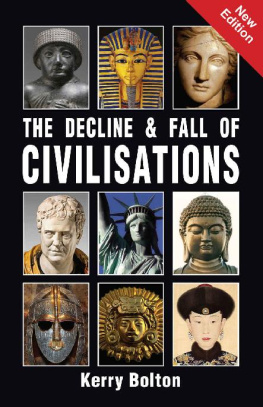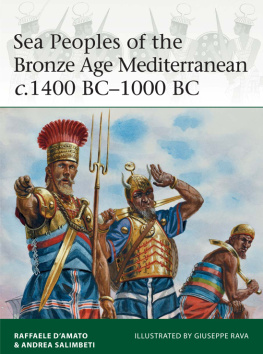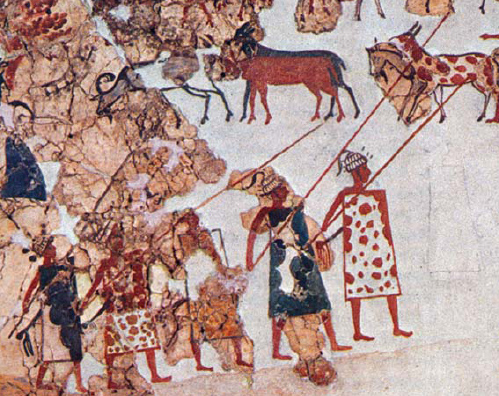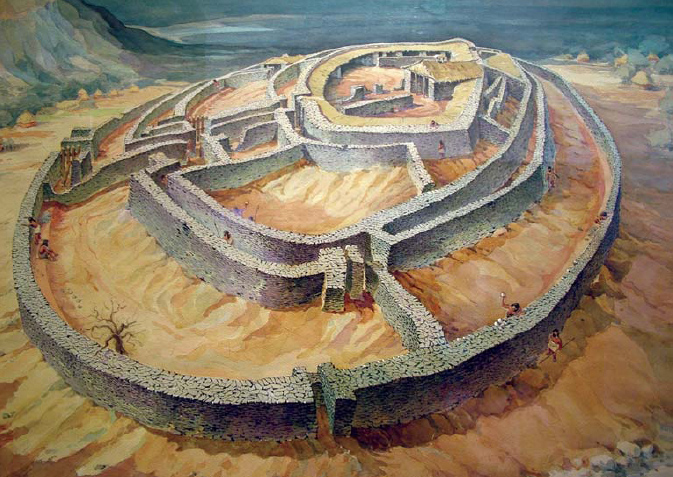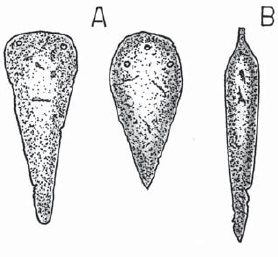WARRIOR 167
EARLY AEGEAN WARRIOR 50001450 BC
| RAFFAELE DAMATO AND ANDREA SALIMBETI | ILLUSTRATED BY GIUSEPPE RAVA |
Series editor Marcus Cowper
CONTENTS
EARLY AEGEAN WARRIOR 50001450 BC
INTRODUCTION
Evidence of human settlements in the Aegean region dates as far back as prehistoric times. Their origin and development was modelled in terms of large-scale processes (such as agriculture and urbanization) and by the progress of civilization.
Mainland culture
The Greek mainland Neolithic settlement of Sesklo on Kastraki Hill dates from the middle of the 7th to the 4th millennium BC . Sesklo, discovered at the end of the 19th century, is considered one of the main Neolithic settlements in Europe. The pottery found there forms the chronological basis for the Middle Neolithic sub-periods for the whole Hellenic region (Sesklo civilization). Its main features are the improved firing technique used for clay pottery, which produces a superb red colour, and the use of stone tools, weapons and obsidian, imported from Melos. The people of this period lived by raising animals and farming. In the Early Neolithic Period (6th millennium BC ), the houses had stone foundations, walls of unbaked mud-brick and floors of beaten clay.
The hill of Dimini one of the better-known Greek Neolithic settlements was inhabited almost from the beginning of the 5th millennium BC and gradually evolved until 4500 BC . It has been reckoned that there were 200 or at most 300 inhabitants. Among its archaeological remains (architecture, pottery, tools, figurines, jewellery), all cultural achievements of the Aegean society of the Late Neolithic II Period (48004500 BC ) are represented (Dimini Culture of Greek Prehistory).
Cyclades
According to the findings, the Cyclades had been inhabited by a native population that had been arriving from the Greek mainland since the Mesolithic Era (75006500 BC ). More accurate archaeology has revealed that a massive migration of a proto-Ionic farming and seafaring society, coming from Asia Minor, moved to the Cyclades around 5000 BC .
For the first time, these populations imported to the region the copper utilized to make weapons, tools and objects for everyday use. About 3000 BC a new wave of migration apparently occurred in the Aegean, most likely from Asia Minor. These people used bronze, a revolutionary material in ancient human history made from an alloy of copper and tin, thus introducing the Bronze Age. Early Cycladic civilization the forerunner of the first true Greek culture rises at about the same time as the early Egyptian and Mesopotamian civilizations.
Reconstructive drawing of the Dimini fortifications, about 5000 BC , Athens, National Archaeological Museum. (Authors collection)
Modern scholars conventionally divide it into three periods: Protocycladic (32002000 BC ), Mesocycladic (20001550 BC ) and Postcycladic (11501100 BC ). During these phases Cycladic culture was at first increasingly swamped by the rising influence of Minoan Crete and later of Helladic Achaea.
Early Cyprus
The earliest traces of human activity on Cyprus, probably short-lived populations of hunter-gatherers, date to about 8800 BC . Though the evidence is sketchy it seems that these visiting bands exterminated the islands unique fauna and did not establish any permanent settlements.
The first permanent Neolithic settlements appeared towards the end of the 8th millennium BC and were inhabited by small communities of farmers, fishermen and hunters probably arriving from the Syro-Palestinian coast and Anatolia. This culture, which takes its name from the best-known site of the period, Khirokitia in the south, was short lived and had gone into decline by 5500 BC .
The second group of inhabitants, known as the Sotira culture, had no connection with its predecessors, even if it sometimes occupied the same sites. It is distinguished by small ornaments of picrolite (a variety of soapstone) and progressively more elaborate pottery, and lived in Cyprus between 4600 and 3900 BC . Its economy was based on agricultural trade between its villages but not with the outside world. Towards the end of this period copper came into use. The decline of this culture was rapid, perhaps precipitated at least in some places by an earthquake, and several sites were abandoned.
Selection of copper daggers from: a) Haghia Marina (Phocis), b) Haghios Dimitrios (Triphylia), Late-Final Neolithic (c.5300 3200 BC ). Chaironeia Museum n. inv. 698, 698, Olympia Museum, M1324. (Drawing by Andrea Salimbeti ex Papathanasopoulos)
The succeeding era (39002500 BC ) is known as the Chalcolithic Period (literally, copper-stone age). This period represents a transitional stage between the Neolithic and the Early Bronze Age, and is characterized by the appearance in Cyprus of the first metal objects, mainly small tools of hammered copper. It is still unclear whether copper-working was a local invention or imported from the East. There are no indications of systematic extraction of copper on Cyprus during this period. On the other hand, the evidence of maritime trade is limited to small quantities of obsidian from Asia Minor. The economy continued to be based on agriculture, although gradually developments such as the use of seals, the construction of special installations for worship and increasing diversity in burial habits appeared, suggesting relatively complex forms of social organization. Of particular interest are the abstract female figurines, fashioned from the local stone picrolite, which allude to fertility cults, continuing a long Neolithic tradition.
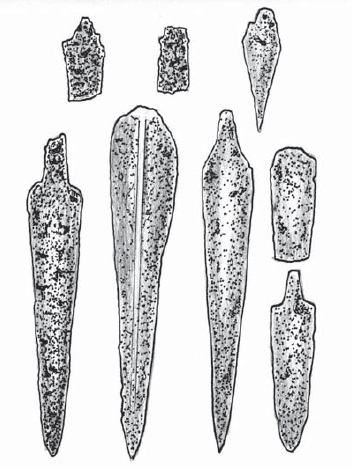
Selection of copper daggers from Dimini and Sesklo (c.48003300 BC ). (Drawing by Andrea Salimbeti)
The transition from the Chalcolithic to the Early Bronze Age was marked by radical changes, most likely caused either by population migration from the coast of Asia Minor or by internal developments. Old settlements were abandoned and new ones were founded close to sources of water and tracts of arable land. The systematic exploitation of the rich copper ore deposits on the island began in this period with techniques of mining, smelting and working that were possibly introduced from the Near East, where metallurgy was already advanced. By the end of the Early Bronze Age, the Cypriot bronzesmiths had developed their own tradition, producing distinctive types of weapons and tools. Nonetheless, trade continued to be limited and farming continued to form the basis of the economy.
During the Middle Bronze Age, Cyprus developed more complex forms of social organization partly due to increased trading connections with neighbouring cultures. The pronounced differences in wealth, observed in burials, point to more strictly defined social divisions. Many settlements were fortified, probably in response to domestic conflicts rather than to external threats. Religion acquired more complex forms of expression, with specific cult sites and elaborate ritual trappings. The presence of permanent metallurgical installations confirms the increasing importance of copper for the island and there is sound evidence of trade with the Syro-Palestinian coast, Egypt, Anatolia and Minoan Crete. Moreover, the earliest Mesopotamian and Egyptian texts referring to a copper-producing land called Alashiya (identified as Cyprus by many scholars) date to this period.

